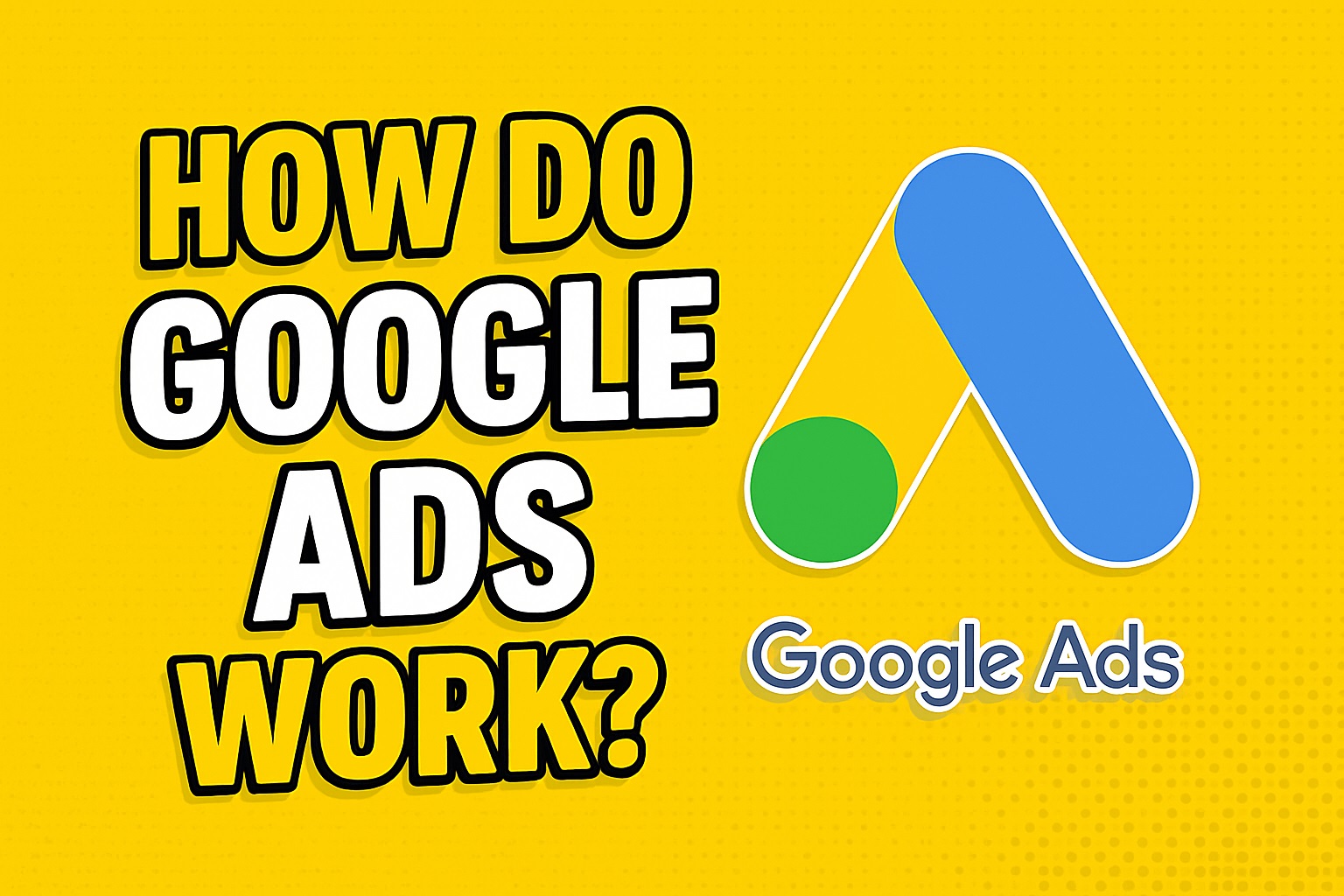Google Ads is Google’s online advertising platform that allows businesses to promote products and services on Google’s search results pages and across its advertising network. When you search for something on Google, the ads you see at the top or bottom of the page are powered by this system. Google Ads operates on a pay-per-click (PPC) model, meaning advertisers only pay when someone clicks on their ad.
For businesses, Google Ads provides a way to reach people actively searching for what they offer. Its targeting capabilities help ensure ads are shown to the right audience at the right time. Understanding how Google Ads work can help businesses optimize their marketing spend, attract more visitors, and ultimately drive conversions.
How Google Ads Operate
At its core, Google Ads functions as an auction system that determines which ads appear for a user’s search and in what position. When a user types a query into Google, the system instantly runs an auction among advertisers who are bidding on keywords relevant to that search.
Each advertiser sets bids for keywords they want to target. However, it’s not just the highest bid that determines which ad appears. Google uses Ad Rank, a metric that considers both the bid amount and the Quality Score of the ad. Quality Score is based on factors like the relevance of the ad to the search query, the quality of the landing page, and the expected click-through rate (CTR).
The process works as follows:
- Keywords chosen by advertisers trigger ads when users search for those terms.
- Google evaluates all eligible ads using Ad Rank, which is calculated as Bid Amount × Quality Score.
- Ads with the highest Ad Rank appear in top positions on the search results page.
This system ensures that users see ads that are relevant to their search, while advertisers compete fairly based on both quality and bid.
Key Components of Google Ads
To run a successful Google Ads campaign, it’s important to understand its main components:
Campaigns, Ad Groups, Ads, and Keywords
Google Ads is organized hierarchically:
- Campaigns are the top-level structure and define overall settings like budget, location targeting, and ad networks.
- Within campaigns are Ad Groups, which organize related ads and keywords together.
- Ads are the actual messages users see, including headlines, descriptions, and URLs.
- Keywords are the search terms you want your ads to show for.
Match Types
Google Ads offers different match types to control which searches trigger your ads:
- Broad match: Shows ads for related searches, including synonyms and related variations.
- Phrase match: Ads show when the search includes your keyword phrase in the same order.
- Exact match: Ads show only for searches that exactly match your keyword.
Ad Extensions
Ad extensions add extra information to your ads, such as phone numbers, locations, additional links, or promotions. These enhance visibility and can improve click-through rates by making ads more useful to users.
How Google Determines Costs (CPC & Budgeting)
Google Ads uses a cost-per-click (CPC) pricing model, where advertisers pay only when someone clicks on their ad. The actual CPC you pay is influenced by the auction system, not simply your bid. Specifically, Google calculates your actual CPC as just enough to beat the Ad Rank of the next-highest competitor, ensuring you only pay what’s necessary to maintain your position.
Daily Budgets
Advertisers set a daily budget for each campaign. Google will try to maximize clicks within that budget while adjusting delivery throughout the day based on demand and competition.
Bidding Strategies
Google Ads offers several bidding strategies to help achieve different goals:
- Manual CPC: You set maximum CPC bids for keywords.
- Enhanced CPC (ECPC): Google adjusts your manual bids to increase conversions.
- Maximize clicks: Automatically sets bids to get the most clicks within your budget.
- Target CPA (Cost Per Acquisition): Aims for conversions at a target cost.
- Target ROAS (Return on Ad Spend): Optimizes for revenue return.
Understanding how costs are determined allows advertisers to set realistic budgets and bidding strategies that align with their marketing goals.
Measuring Success: Metrics & Tracking
Monitoring performance is crucial to running effective Google Ads campaigns. The platform provides several key metrics and tools for tracking success:
Click-Through Rate (CTR)
CTR measures the percentage of users who click your ad after seeing it. A high CTR often indicates that your ad is relevant and compelling to searchers.
Conversion Tracking
Google Ads allows you to set up conversion tracking to measure actions that matter to your business, such as purchases, form submissions, or phone calls. This data helps determine whether your ads are driving real business results.
Quality Score
Quality Score is an internal metric (scored 1–10) reflecting the relevance and quality of your ads, keywords, and landing pages. A higher Quality Score can reduce your CPC and improve ad positions, making your campaigns more efficient.
By tracking these metrics, advertisers can optimize their campaigns to improve performance, reduce costs, and achieve better results over time.
Conclusion
Google Ads is a powerful advertising platform that allows businesses to reach people actively searching for their products or services. Its auction-based system ensures that ads are shown based on both bid amount and ad quality, rewarding advertisers who create relevant, high-performing campaigns.
Understanding how Google Ads operates — from campaign structure and keyword match types to CPC pricing and performance metrics — gives businesses the knowledge they need to run effective, efficient campaigns that drive results.
